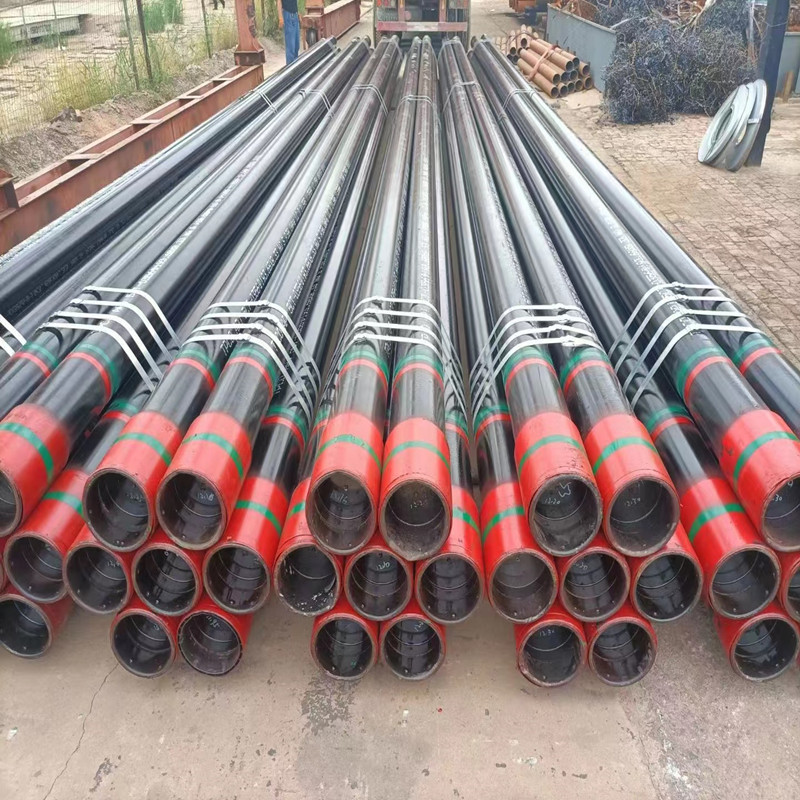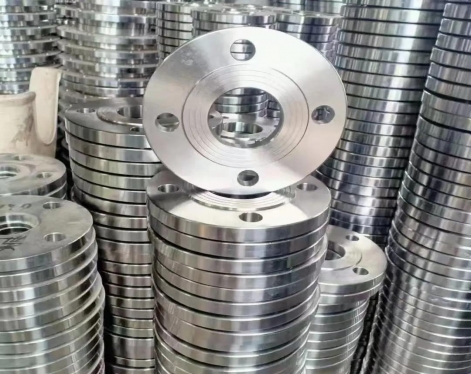1.What is carbon steel casing pipe?
Carbon steel casing is a steel pipe used in oil wells to establish a pressure-resistant sealing zone from the oil and gas reservoir to the surface. Casing, oil pipe, and drill pipe all belong to OCTG pipe materials. OCTG, the full name of Oil Country Tubular Goods, is a special oil pipe material. It refers to a type of steel pipe specially used for oil and natural gas extraction. Most of them are seamless pipes, but welded pipes also account for a considerable proportion.2.Types of carbon steel octg casing
(1)According to material
Carbon steel pipes can be divided into three types according to their materials: low carbon steel, medium carbon steel, and high carbon steel.Low carbon steel casing refers to casing pipes made from steel with a relatively low carbon content. Typically, low carbon steel contains less than 0.30% carbon by weight.Medium carbon steel casing pipe refers to casing pipes made from steel with a moderate carbon content. Generally, medium carbon steel contains between 0.30% and 0.60% carbon by weight.High carbon steel casing pipe refers to casing pipes made from steel with a high carbon content. Generally, high carbon steel contains more than 0.60% carbon by weight.(2) According to the production method
carbon steel octg casing can be divided into seamless casing pipe, ERW (Electric Resistance Welded) casing pipe.Seamless casing refers to a type of casing pipe that is manufactured without any longitudinal weld seams. Seamless steel pipe is a steel pipe that is made of a whole round steel and has no welds on the surface.ERW steel casing refers to oil casing produced by resistance welding. Resistance welding refers to a method that uses the resistance heat generated by current passing through the weldment and the contact as a heat source to locally heat the weldment and pressurize it at the same time.
3. Function of carbon steel octg casing
The main functions of casing include the following seven functions:(1)Preventing well collapse and excessive erosion of the well wall by drilling fluid.
(2) Preventing the freshwater layer and low-pressure layer from being polluted.
(3) Preventing oil and gas leakage.
(4) Controling the amount of oil and gas entering the well.
(5)Providing conditions for controlling the pressure in the well.
(6)To install artificial lifting equipment for oil production.
(7) Providing channels for oil and gas flow.
4. Carbon steel casing drilling technology
Casing drilling refers to using casing instead of drill pipe to apply torque and drilling pressure to the drill bit during the drilling process, transmit mechanical energy and hydraulic energy downhole, and realize drill bit rotation and drilling. The downhole drilling tool assembly is connected to the casing string. Below, the casing is run while drilling. After drilling, the casing used as the drill string remains in the well to complete the well. Casing drilling has obvious advantages over conventional drill pipe drilling. It is a technological revolution in drilling engineering and can bring huge economic benefits to oilfield operators.The advantages of casing drilling are reflected in the following nine aspects:
(1) Reducing drilling time.
When replacing the drill bit or changing the downhole drilling tool assembly in conventional drill pipe drilling, the drill pipe needs to be lifted out of the wellbore, which takes a lot of tripping time. Casing drilling uses wire rope tripping, which is 5 to 10 times faster than conventional drill pipe tripping. Therefore, for tripping conditions, casing drilling increases the effective production time by 25% to 30% compared with conventional drill pipe drilling.(2) Reducing underground accidents.
Conventional drilling can easily lead to stuck accidents due to formation expansion and well wall collapse in the wellbore. Since the wellbore of casing drilling is accompanied by casing from beginning to end, common formation expansion, well wall collapse, well wall erosion, wellbore keyways and steps are greatly reduced. Therefore, casing drilling can significantly reduce the occurrence of drilling stuck accidents.(3) Improving well control conditions.
When casing is drilled, there is always a casing in the wellbore, and there is no longer a pumping effect on the wellbore when tripping the drill pipe, which is beneficial to protecting the stability of the wellbore. Therefore, the blowout situation caused by tripping is greatly improved.(4) Maintaining continuous mud circulation during tripping.
Since the hydraulic cable blowout preventer and wire rope sealing device are installed on the power faucet in casing drilling, it can ensure the continuous circulation of mud during tripping and prevent the occurrence of downhole accidents such as drilling cuttings deposition, well wall blockage, and well kick.(5) Improving hydraulic parameters, annular return speed and wellbore cleaning conditions.
Since the inner diameter of the casing is larger than that of the drill pipe, the hydraulic loss along the way is greatly reduced, thereby reducing the power of the mud pump of the drilling rig. The reduction of the annular space increases the mud return speed and improves the chip carrying condition.(6)The size of the drilling rig can be reduced, the drilling rig structure can be simplified, and the drilling rig cost can be reduced.
Due to the improvement of hydraulic parameters, the drilling rig mud pump power has decreased, and therefore, the operating cost of the drilling rig has decreased. Casing drilling can eliminate the second-layer platform and drill pipe discharge area. The drilling process is based on a single casing, and there is no need for space for tripping and storage of tripping drill pipes. Therefore, the height of the derrick can be reduced, the drilling rig is equipped with a split-type crown block and traveling block, the weight of the base can be reduced, and the drilling rig cost and drilling rig operating expenses will be greatly reduced.(7)Drilling and casing running are carried out at the same time, which effectively prevents the occurrence of well wall collapse and stuck pipe during the process of pulling out the drill pipe and running the casing when the drill pipe is completed, shortening the drilling cycle and reducing losses caused by drilling accidents.
(8)The casing drilling rig can be a truck-mounted drilling rig, which is lighter, has less overall items, is easy to relocate and operate, and the manual labor intensity and cost will be greatly reduced.
(9) Drill pipes are no longer used in the entire drilling process, saving a lot of manpower, material resources and costs related to the procurement, transportation, inspection, maintenance and replacement of drill pipes and drill collars.
Previous:SSAW pipe pile









